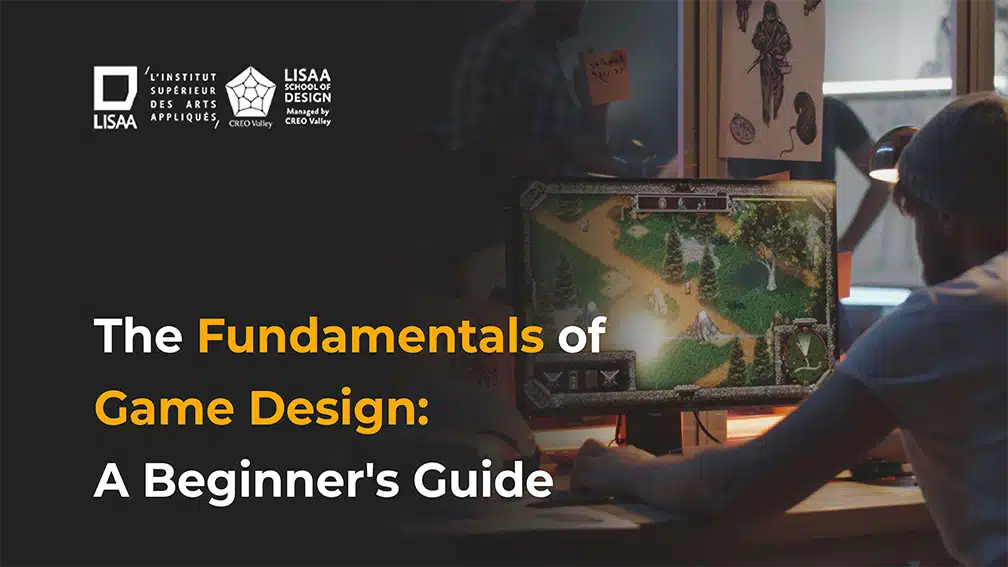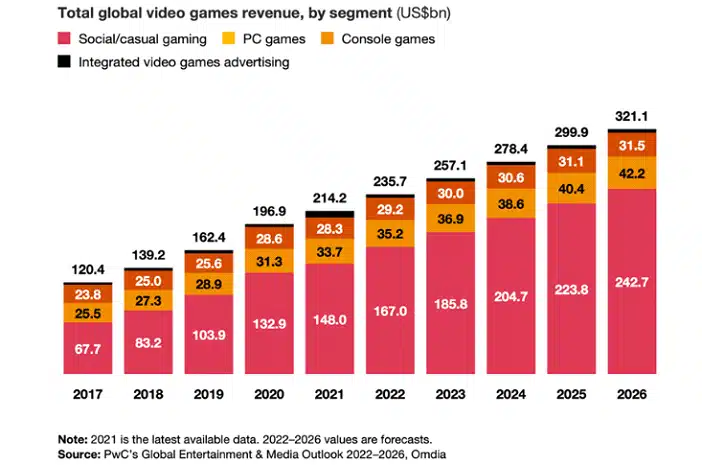
Do you like gaming so much that you are pleased to take it up as your profession?
If yes, this article is for you where you learn about the best game design course at LISAA School of Design and the fundamentals of game design.
Read this article to know more.
What is Game Designing?
Game designing is the art of giving life to your imagination in the form of games via animations and motion graphics. It is the process of creating the content, rules, mechanics, and overall structure of a game, whether it’s a video game, board game, card game, or any other type of interactive experience. It’s a multidisciplinary field that involves elements of art, storytelling, psychology, programming, and more.
Now, we move forward to know the different types of game design.
Also Read: What you can Expect to Learn in a Game Design Course?
Types of Game Design
Game design encompasses various types, each catering to different platforms, player preferences, and gameplay styles. Here are some common types of game design.
Video Game Design:
- Console Games: Designed for gaming consoles like PlayStation, Xbox, or Nintendo.
- PC Games: Developed for personal computers, often with a wide range of genres.
- Mobile Games: Tailored for smartphones and tablets, frequently featuring simple controls and short play sessions.
Augmented Reality (AR) and Virtual Reality (VR) Design:
Games that leverage AR or VR technologies for immersive experiences, such as Pokémon GO (AR) or VR role-playing games. These games require a strong knowledge of game design fundamentals and mechanics.
Simulations and Strategy Game Design:
Games that simulate real-world scenarios or involve strategic decision-making. This category includes city-building games, simulation games, and real-time strategy (RTS) games.
Educational Game Design:
Educational game design involves creating games with the primary purpose of facilitating learning and skill development. These games are designed to engage players in a way that promotes the acquisition of knowledge, the development of cognitive skills, and the reinforcement of educational concepts.
Having explored the various prominent game designs, let us get into the fundamentals of game design.
Fundamental Rules for Game Design
Game Design involves a lot of rules of play game design fundamentals that are considered crucial to derive the desired interesting gaming outcome.
Let us explore some fundamentals of game development here.
Conceptualization:
Conceptualization is considered the first and foremost essential fundamental of game design as it is the process of formulating and developing the core ideas and vision that will guide the creation of a game.
Conceptualization is the key to defining the fundamental elements that will shape the game’s identity, including its theme, mechanics, and overall player experience. Though conceptualization is considered essential for all sorts of game design, it is considered to have a great effect on educational game design and is thus considered one of the major educational game design fundamentals.
Story-Telling:
Storytelling in game design is a crucial element that adds depth, context, and emotional engagement to the player experience. Well-crafted narratives can enhance immersion, provide motivation, and create a memorable gaming experience.
Storytelling plays a major role in strategic and animation games compared to other game types, thus considered one of the major fundamentals of strategy game design.
Game Mechanics:
Game mechanics are considered one of the major fundamentals of game design as they are the rules, systems, and interactions that define how a game functions. They are the building blocks of gameplay, providing the framework that governs the player’s actions, decisions, and overall experience.
Beginners taking up game design should make sure they develop a strong hand in designing game mechanics for an enhanced user experience.
Prototyping:
Prototyping is a crucial phase in game design where a simplified, early version of the game is created to test and iterate on key concepts, mechanics, and features. The primary goal of game prototyping is to quickly validate ideas, identify potential issues, and gather valuable feedback.
These four facets are considered the indispensable fundamentals of game design that every game designer should equip for a great career in the game design field.
Further, let us get to have an idea of the gaming industry’s career scope.
Gaming Industry and Career Scope
The gaming industry is ever flourishing among today’s generation and here is a graph that depicts the significant development of the game industry in recent years:

Source: Weforum
According to the Times Of India Report in October 2022, India has the world’s second-largest entertainment industry with a reach of INR 24.5 billion market size. As the industry is great, so are the career opportunities.
So, it is clear that the gaming industry holds a great career scope with its expanding market value.
So, what should we do to professionally make a career in this industry? Pursue BAFM at LISAA School of Design. Know about the course below.
Know about BAFM
BAFM is the best course for both gamers and filmmakers who indulge in learning the nuances and tactics that stand behind the best entertaining games and movies. Here is a brief detail regarding the BAFM course that we provide at the LISAA School of Design:
| Full form | Bachelor of Animation and Multimedia(Film-making) |
| Course description | A full-time degree that is dedicated to educating the techniques and methodologies behind game designing, animation, and multimedia. |
| Level | Undergraduate level |
| Duration | 4 years |
| Eligibility criteria | Candidates should have completed a minimum of 10+2 in any recognized educational institution. |
| Admission procedure | Admission to BAFM at LISAA is based on the entrance test, the LISAA CAT-Creative Aptitude Test conducted by the school. |
With this, we have provided you with every possible detail that you would require to start your career in the gaming industry.
Also Read: What is Animation Game Design & Multimedia Course All You Need to Know
Conclusion
Learning the fundamentals of game design is a crucial step that decides your game-designing caliber thus making you an able game designer. Taking up a professional gaming course and equipping yourself with a proper idea of the fundamentals of game design is the wisest move for a great game design career.
FAQs
What are the fundamentals of game design?
⦁ Conceptualization
⦁ Storytelling
⦁ Game Mechanics
⦁ Prototyping
What are the 4 elements of game design?
⦁ Game play
⦁ Story
⦁ Art Design
⦁ Graphics
What are the fundamentals of level design?
⦁ Game Tone
⦁ Game Narration
⦁ Game Goals
⦁ Creating Game Stages
⦁ Final Mission
What are the key features of game design?
⦁ Game mechanics
⦁ Level Design
⦁ Characters and Plot
⦁ Audio design
⦁ Strategy